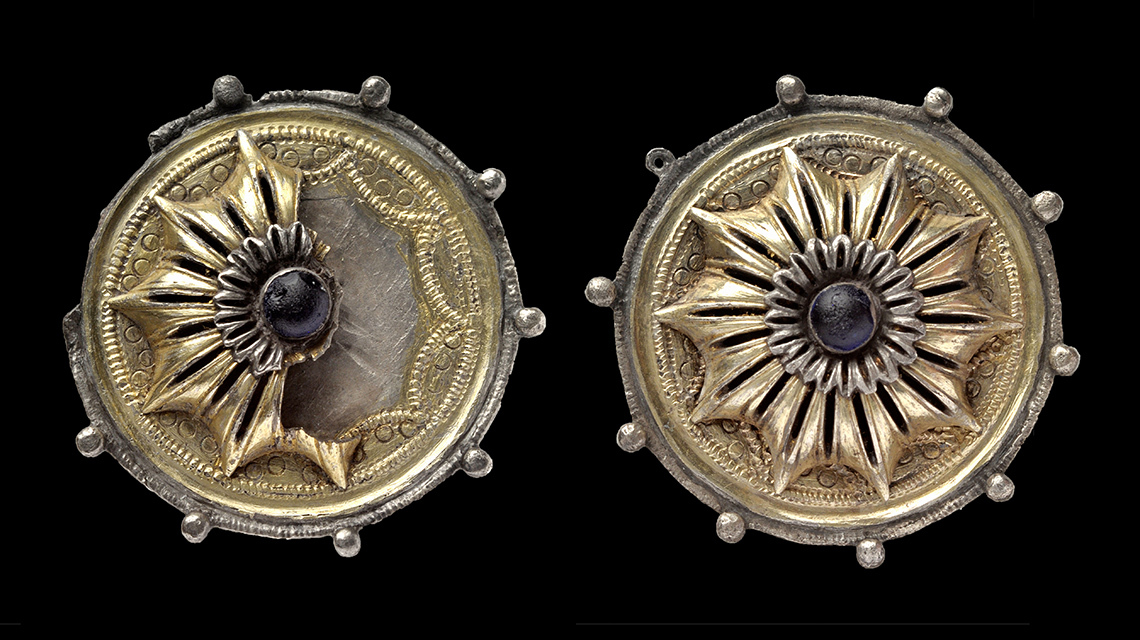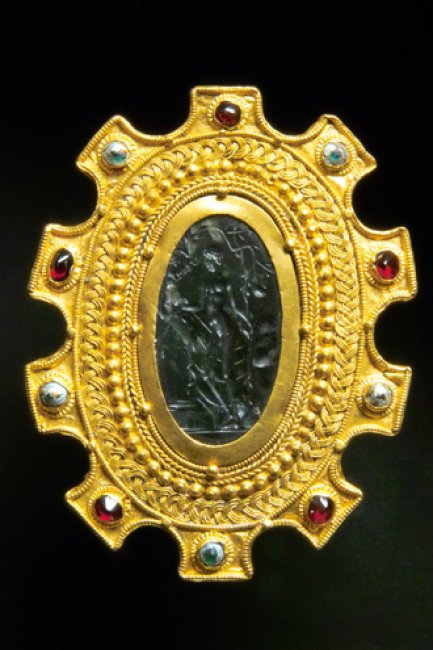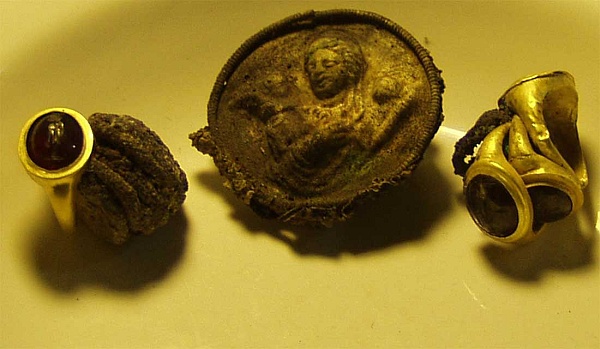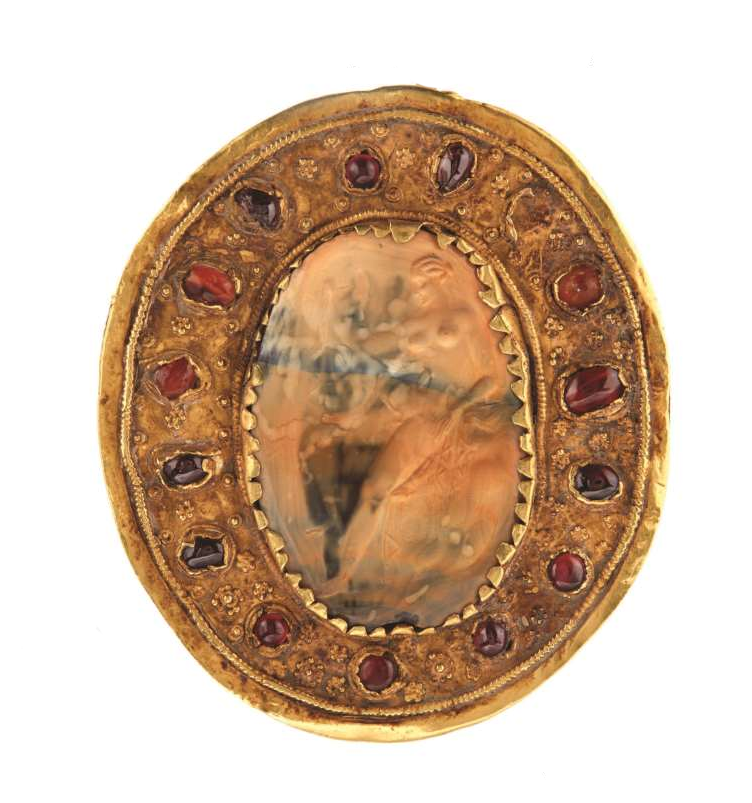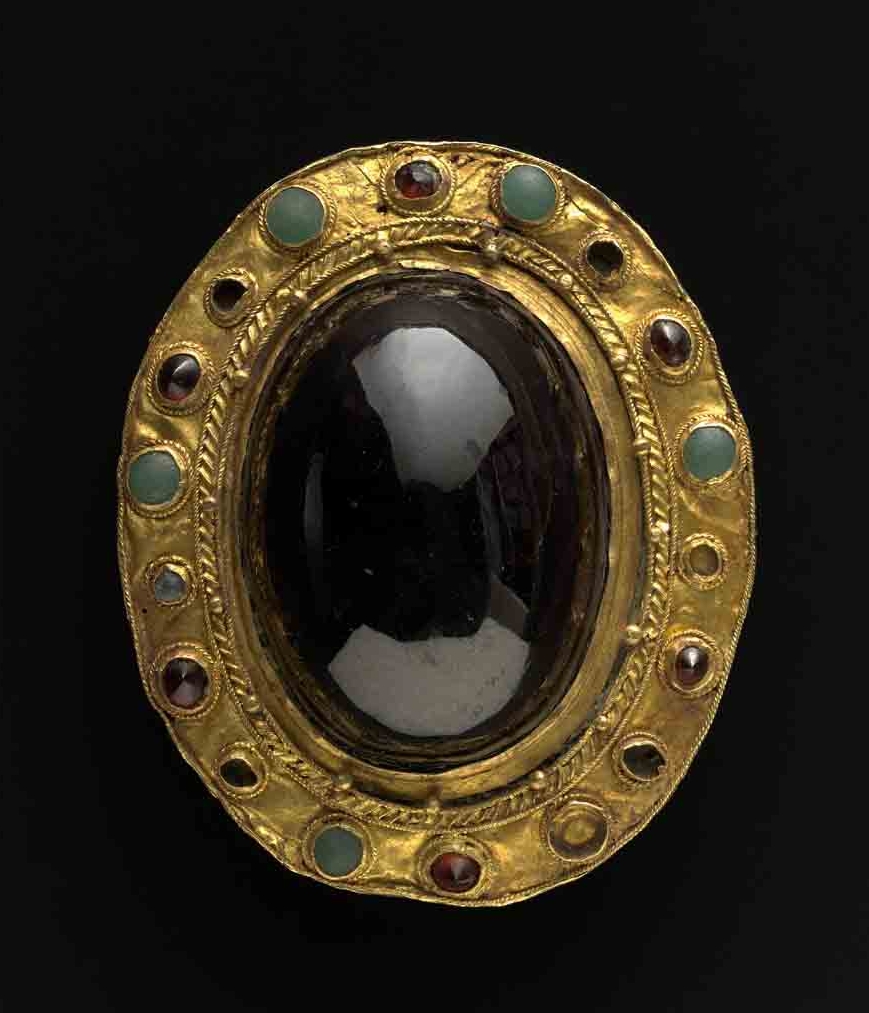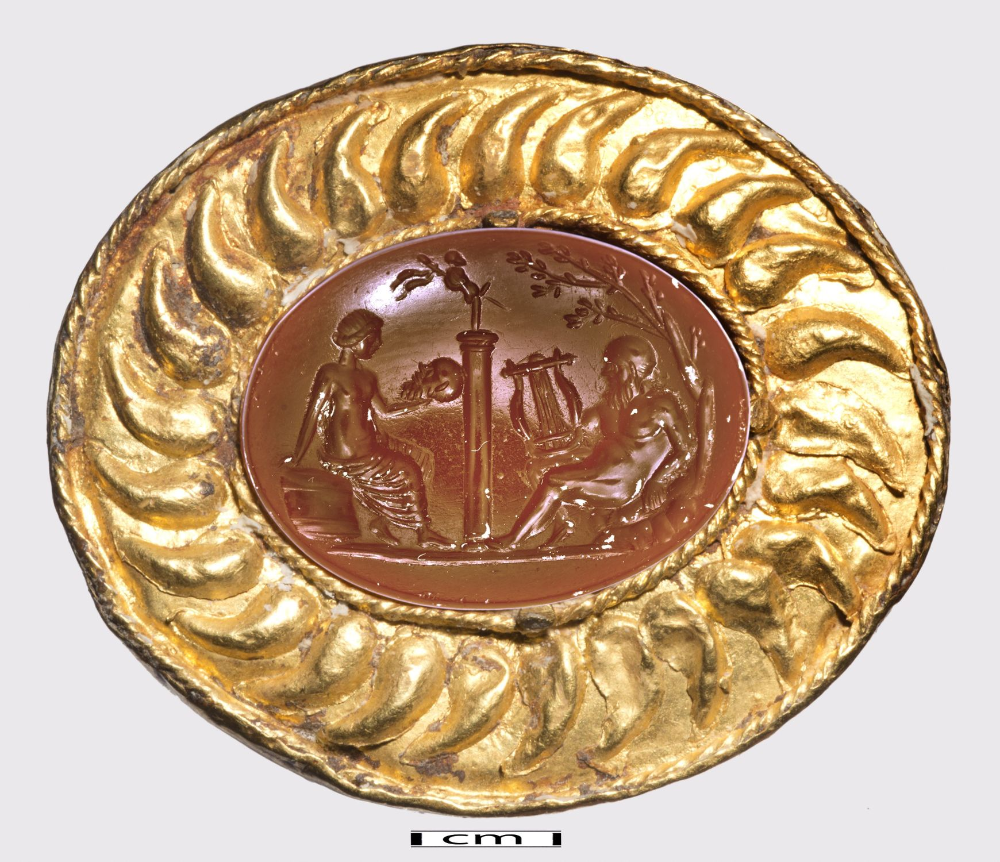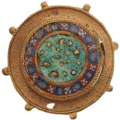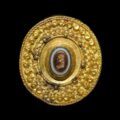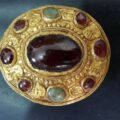Waldgirmes brooch, a disc fibula. Silver, diam. 3 cm. 5 BCE–16 CE


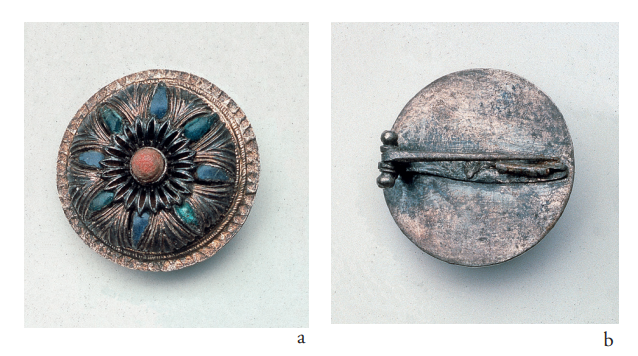


The founding date of Waldgirmes at the latest 4/3 BC has consequences for the early dating of another Roman camp, in particular for the creation of Haltern. The advent of Haltern must have taken place some years before Waldgirmes, i.e. around 7-5 BC due to the greater percentage of older coins found there.
Another preciousness is an intact silver fibula with a hinged structure. On the silver base plate of about 3 cm in diameter is located, supported by a central stud, a silver filigree worked in the form of eight arching lotus leaves. The rivet on the visible side is covered with a red stone, probably amber. The lotus leaves are decorated with blue and green triangular glass inlays. A disc fibula of this shape, quality and dating is so far with hundreds of archaeological finds of the first imperial period found and counted, something truly unique. source
Gabriele Rasbach, Die Metallfunde. In: Waldgirmes I. Funde und Befunde. Römisch-Germanische Forschungen 71 (Bonn 2015) 124-193 academia
Fibulas – They belong to that of S. Rieckhoff defined a spectrum of forms in time between 5 BC and 16 AD.
The silver disc was recovered from the bottom of the ditch 2 running from north to south and is one of the few finds that can be attributed to the beginning of the settlement. It consists of a base plate on which a round, perforated silver sheet is placed through a central rivet. The filigrane-worked edition in the form of eight lotus leaves is adorned with teardrop-shaped, dark blue and green glass inlays in the shape of a cabochon (Figs. 125–126). The central rivet, covered by a red glass bead, connects the two parts with the fibula construction on the back of the base plate. The base disk is decorated with a pearl rim on the visible side. This part and the outer leaves of the lotus are gilded, while the inner wreath of the flower around the central red glass insert was not gilded (Fig. 126 a – g).
The piece was not only designed in different colors because of the glass inlays. A separately worked cheek-hinge pin with a straight bracket (length 25 mm), closed needle holder and a shield-shaped head plate with transverse profile (height 7 mm) is used to attach it to the clothing. The needle axis ends in two spherical heads. On the back of the beginning of a decentralized drilling can be seen, which was not made. FH Marshall discusses the use of similarly designed jewelry discs as earrings and also refers to an archaic terracotta statuette on which the wearing of such discs as a brooch can be seen. Typologically, St. Martin-Kilcher also classified the disk filings from Waldgirmes in the series of outstanding pieces of jewelry, which she suspects to have originated in jewelry forms in Upper or Central Italy, when working on gold jewelry from Lunnern (Zurich). The typological design of the fibula can also be compared with simple bronze sheets that were recovered in a military context in Rississen and in civilian surroundings in the Swiss Chur.
The decorations there are not pierced, but only scratched. G. Ulbert spoke of these rivets adorned with a florally decorated sheet metal as part of the lorica segmentata on the basis of the findings what finds from Richborough confirm and shows the continuous lines of tradition. The three-dimensional design of silver fitting disks from the treasure of Lički Ribnik, Croatia, or on a belt plate made of Xanten are also very comparable. The construction can be compared with the development of the small thistle fingers with a central rivet decorated with glass, as already described in the form Dollfus I, 20a. The piece from Waldgirmes is part of a small group of richly decorated disk fingers, the needles of which have a back hinge. Our disk fingers have the best parallels in two examples from Trier. These two found each other as a couple in 1993 during an excavation in Feldstrasse, on the grounds of the Borromean Clinic. They also consist of partly gold-plated sheet silver; the central rivet is covered there with a blue glass. Its stratigraphic allocation is not clearly clarified due to the circumstances of the find, but in 1993 traces of construction from the late 1st century were also uncovered in the Feldstrasse area. Due to their somewhat simpler design, they can be placed about a generation later than the piece from Waldgirmes.
Photo from wiki >> Waldgirmes Schnalle (eng. buckle)
Photo Livius.org
Mentioned: https://www.archaeology.org/issues/249-1703/features/5298-germany-roman-town-waldgirmes#art_page2


